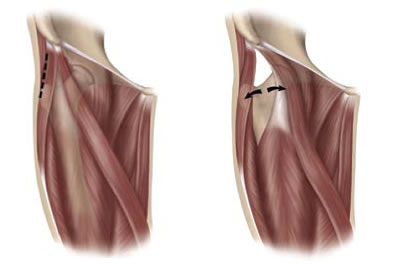Muscle Sparing Anterior Approach
The Anterior Approach for total hip replacement is a muscle-sparing alternative to traditional hip replacement surgery that provides the potential for less pain, faster recovery, less dislocation risk, and improved mobility because muscles are not cut during the surgical procedure. The technique allows the surgeon to work between your muscles and tissues.

With the Anterior Approach, the surgeon uses one small incision on the front (anterior) of your hip that is about 4 inches long. The Anterior Approach procedure for total hip replacement has been gaining popularity recently due to its potential benefits:
- Possible accelerated recovery time and shorter hospital stay. Because key muscles are not detached during the operation, this allows for less pain and the more rapid discontinuation of crutches or a walker.
- Potential for fewer motion restrictions after surgery. In a traditional approach, patients will have motion restrictions that help the injured muscles recover and prevent dislocation. With the anterior approach no motion restriction are required after surgery.
- Less risk of dislocation. Because no muscles are cut, the risk of dislocating your hip replacement can be lower with an anterior approach.
- Possible reduced scarring due to less disturbance of the tissue.
- More precise placement of the hip replacement components due to the use of intra-operative x-ray that confirms the size and positioning of the parts during surgery.
Every surgical approach has risks and benefits, and the anterior approach is not the right procedure for every patient. The safest approach for a hip replacement and the performance of a hip replacement depends on your age, weight, body type, activity level, and other factors.
